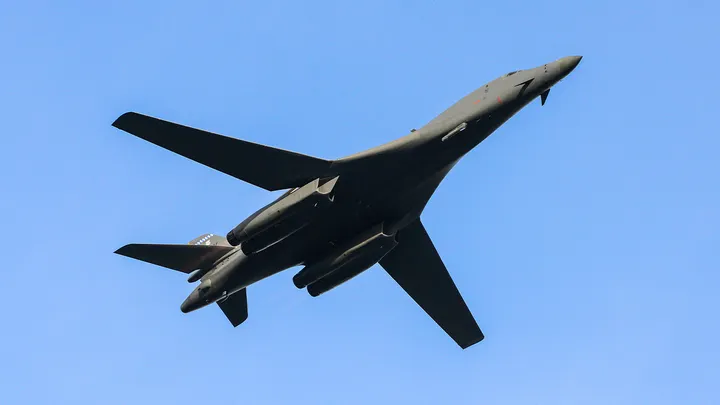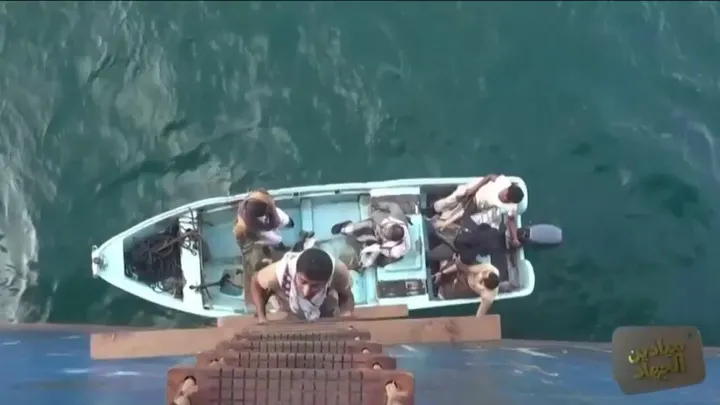Friday’s strikes were just a taste of what the B-1s can unleash

On Friday, U.S. Air Force B-1 bombers conducted strikes that destroyed 85 targets across four areas in Syria and three in Iraq, targeting Iran proxy militia sites. Remarkably, these strikes were launched from Texas.
The White House has pledged a multi-faceted campaign against the militias supported by the Iranian Revolutionary Guards Corps. Presently, President Biden and his administration are utilizing airpower to restrain and retaliate against Iran’s proxies.
Certainly, Friday’s strikes merely scratched the surface of the destructive capability of the B-1 bombers.
For the B-1 crews who conducted the missions, the regions of Syria and Iraq are like familiar territory. B-1s have been engaged in combat missions for Central Command for years, striking fixed targets, neutralizing chemical weapons sites, and providing support to friendly ground forces by targeting ISIS insurgents with precision bombs, one at a time.
After Trump romps in Nevada, GOP presidential race moves to Haley’s home state of South Carolina
The B-1s have the biggest payload of any American bomber. Heck, each B-1 can carry 42,000 pounds of precision, individually-targetable munitions. That means IRGC safe houses and weapons routes in Syria and Iraq can be turned into a moonscape. Think about that, Esmail Ghani.
The sleek and supersonic B-1 bomber was famously canceled by President Jimmy Carter in 1977. President Ronald Reagan brought it back in 1981 and built 100 B-1 bombers in California.

According to the 1982 rock lyrics of George Thorogood and the Destroyers, this airplane is undeniably cool, b-b-b-bad to the bone. Literally. Officially designated as the Lancer, the B-1B bomber is affectionately known as the B-ONE or “Bone.”
Hands down, it’s the sleekest bomber ever constructed. While it lacks the stealth design of the B-2 Spirit or the new B-21 Raider, the B-1 exudes speed. Powered by four General Electric F101 dual-rotor, afterburning turbofan engines, the B-1 can reach a top speed of Mach 1.2, or approximately 900 miles per hour.
A fascinating aspect of the B-1 bomber is its variable-sweep wings, which can adjust during flight. During take-off and landing, the wings are positioned forward at an angle of 15 degrees from the fuselage. By sweeping the wings back to an angle of 67 degrees, the lifting efficiency enables the B-1 to achieve speeds faster than the speed of sound, whether flying at low or high altitudes.
During the Cold War era, the B-1 was specifically engineered to infiltrate Soviet Russian airspace by flying at extremely low altitudes, skimming the terrain to conceal their approach to targets during wartime. Crews underwent rigorous training for these missions, often practicing at night, in adverse weather conditions, and mountainous terrain. Former B-1 pilot, retired Air Force Lt. Gen. Chris Miller, described the experience, stating, “Going nine miles a minute at 400 feet or less, there’s a lot of blur when you look out the side window.”
Today, B-1 bombers operate at higher altitudes for combat missions to facilitate the deployment of advanced precision weapons. These aircraft also undertake remarkably long missions, such as flying from Texas to Syria and back.
The B-1 mission originating from Texas is considered part of the standard combat routine. However, enduring a 30-hour flight while seated in an ejection seat is no easy feat. The presence of four B-1 crew members – two pilots and two combat systems officers skilled in electronic warfare – helps in managing fatigue during these demanding missions.

“Power naps, paying attention to nutrition, and avoiding excessive caffeine intake are key,” Miller advised. “You can manage 24-20 hours and still feel fairly good.”
Personally, the thought of a globe-spanning combat mission with limited coffee is difficult to fathom, but there is space to stretch out between the front and rear cockpit areas. The most comfortable spot for napping in the B-1? On top of the foam and vinyl engine inlet covers always carried aboard during long missions. And yes, there is a portable toilet in the B-1.
In my opinion, last Friday’s B-1 strikes served as a clear reminder that America can initiate a prolonged air campaign whenever necessary.
Moving B-1 bombers to bases within the theater allows them to engage in various missions, including striking Iranian ships at sea and targeting air defense systems or other sensitive sites using long-range weapons like the Joint Air to Surface Missile (JASSM) and the Joint Stand-off Weapon (JSOW). Additionally, B-1s play a crucial role in maintaining pressure on insurgent and militia terrorists across regions from Syria to the Houthis in Yemen.
The B-1s have a history of versatility. In August 2014, for instance, a B-1 departing from Qatar for a mission over Afghanistan was redirected to provide support to Iraqi troops facing the risk of being overrun by Islamic State forces nearing Baghdad.
These bombers conducted missions lasting up to 10 hours, launching precision weapons to target ISIS insurgents and key installations.
The Islamic Revolutionary Guard Corps (IRGC) is a branch of Iran’s Armed Forces responsible for internal and external security, including activities such as sponsoring and supporting various militant groups in the Middle East. It has been designated as a terrorist organization by several countries, including the United States.

U.S. and coalition aircraft collectively dropped over 114,000 bombs between 2014 and 2018.
Challenges with spare parts and maintenance costs have reduced the B-1 fleet to just 45 aircraft. However, the Air Force’s decision to retire 17 B-1s to sustain the remaining fleet is motivated by concerns regarding China. In the Pacific region, the B-1’s supersonic speeds could potentially play a significant role.
Currently, the Air Force is conducting tests on a new external wing pylon developed by Boeing, which could potentially allow the B-1 to carry large hypersonic missiles on its wings. The B-1 has already experimented with the GBU-72 Advanced 5K penetrator and other precision munitions on this pylon, showcasing its versatility and capability. These developments could prove invaluable in the event of aggressive actions by China.
Indeed, the B-1 bomber is formidable. It’s not an aircraft that Iran or China would want to provoke.

